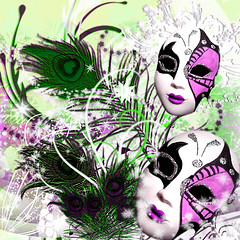Mardi Gras 2012 New Orleans and the World

If you were born in or live in the New Orleans area, you are likely to see Mardi Gras 2012 as a part of annual tradition. Yes, the kids are out of school and, occasionally, some relatives but definitely a lot of strangers come to town. The hotels are packed and the metropolitan area is gitty with excitement for an entire week before hand and all the way through Fat Tuesday or Mardi Gras day.
Its seen as the last hurrah before Lent; however, many of the younger parade goers, new transplants, and even a lot of the tourists who traveled hundreds of miles just to observe and participate don’t know much about the basic history.
I think that it is clear to all natives and visitors that New Orleans has just as rich a history as any port city ever had, and it continues to change, adapt, grow, and honor new developments, in unforgettable ways. These unforgettable celebrations and honors return in the form of Mardi Gras 2012 as it has since about 1781. Of course it took almost another 100 years before the carnival balls, processions, floats, and throws that we recognize today to take shape between 1872 and 73. This was when parade popularity began to grow and the establishment of the association of the purple, green and gold colors and even a song to commemorate the carnival celebration was used.
Some of the most famous Mardi Gras 2012 celebrations take place in Rio de Janeiro, Brazil, Port of Spain, Trinidad and Tobago, Sinaloa, Mexico and New Orleans, Louisiana. However, it is celebrated around the world in places such as Senegal, France, and Belgium. Although occurring at different times of the year, celebrations include fatty foods, masks, and costumes. Mardi Gras 2012 will always be united by what it represents to each of its participants.
